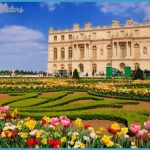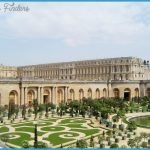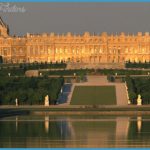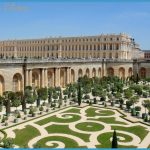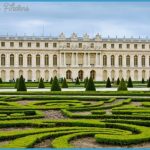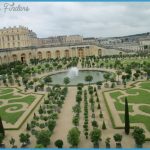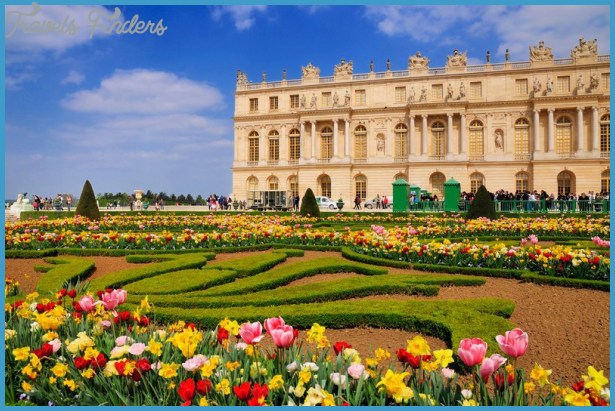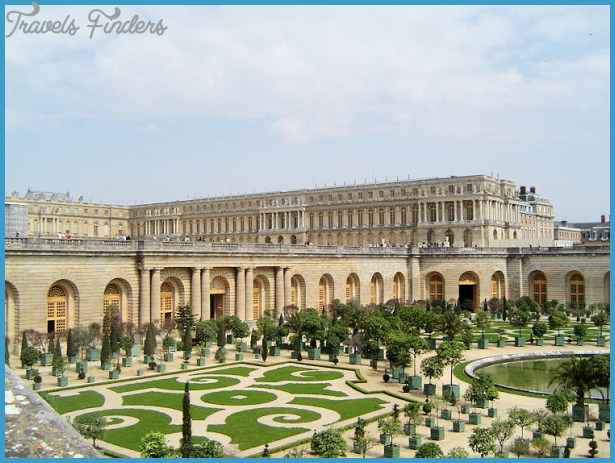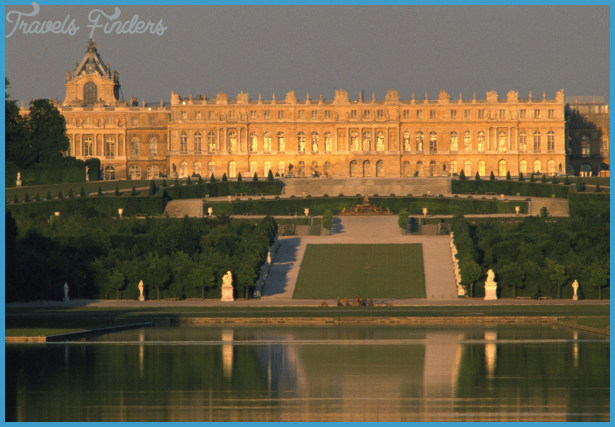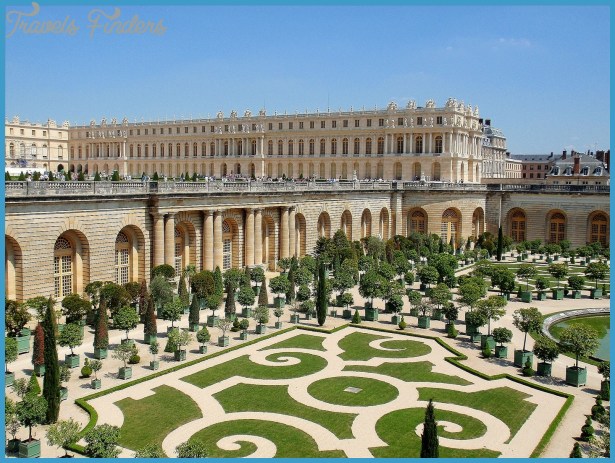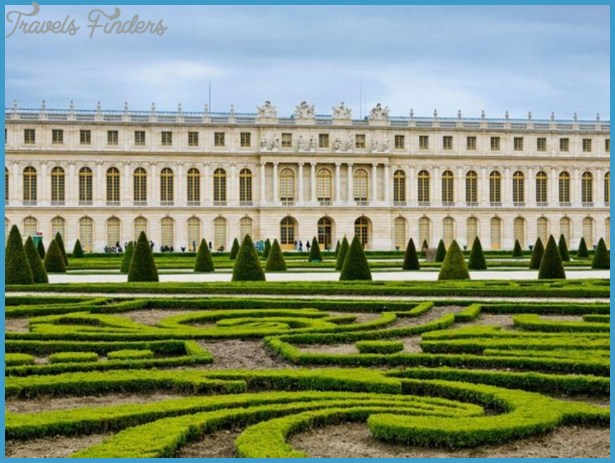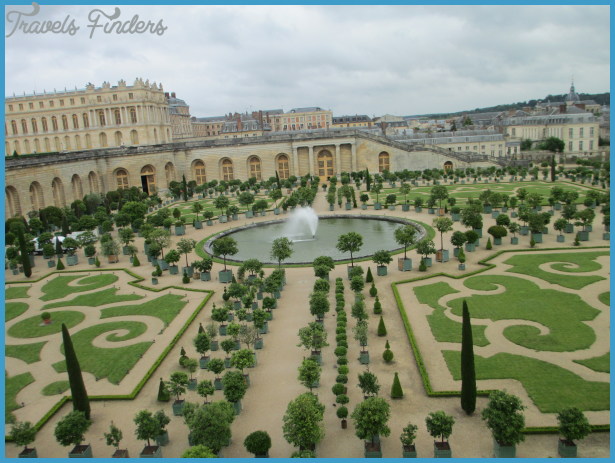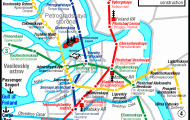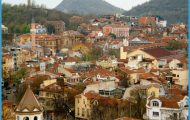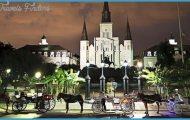LOUIS LE VAU & JULES HARDOUIN-MANSART
One of the world’s largest and most magnificent palaces, Versailles was built for Louis XIV by two of the country’s most prominent architects, Louis Le Vau and Jules Hardouin-Mansart. Built around Louis XIII’s hunting lodge, the palace expanded over several decades, taking the form of a grand central block and two flanking wings set around a central courtyard. The design and initial building was done by Le Vau, and Hardouin-Mansart extended the palace after 1678, when the royal court took up residence and
Versailles became the seat of government. He added the huge north and south wings and incorporated large state rooms such as the Hall of Mirrors. Both architects worked in the baroque style, best typified by grand exteriors and rooms decorated in the most lavish manner, with integral paintings, gilded ceilings and cornices, specially commissioned wall-coverings, large mirrors, and other ornate fittings. Most of these interior details were the work of celebrated painter and designer Charles Le Brun.
Many of the rooms were grouped into suites or apartments allocated to specific members of the royal family, with those for the king and queen situated at the heart of the palace. These central suites were intended as ceremonial or state rooms, in which the ruler or his consort would receive guests according to an elaborate system of ceremony and etiquette. The rich decoration included sun motifs, symbolic of the absolute power of Louis XIV, the “Sun King, and mirrors and gilding designed to reflect his glory.
After the French Revolution of 1789 the all-powerful monarchy was removed, but many later rulers also lived at Versailles and modified the palace to suit their needs. The overall layout of the palace-the great masterpiece of Le Vau and Hardouin-Mansart-has survived, however, and many of the rooms are still decorated in the grandiose 18th-century style, with original details from Louis XlV’s reign, such as paintings, gilding, and door surrounds.
JULES HARDOUIN-MANSART
1646-1708
Born Jules Hardouin, Hardouin-Mansart trained under his great-uncle, the famous French architect Frangois Mansart. He not only adopted his great-uncle’s name, but also inherited his great collection of plans.
Quick to learn, Hardouin-Mansart rose to become royal architect and worked on a number of projects for the king. As well as taking over Versailles, extending the building, and bringing it to completion, he designed the nearby Grand Trianon and another royal palace, the Chateau de Marly.
In Paris he was responsible for several major projects, including the Pont Royal and the church of Saint Roche, as well as notable public spaces such as the Place des Victoires and Place Vendome.
Hardouin-Mansart’s buildings are typical of the later phase of French baroque, in which rows of windows, classical pilasters, and mansard roofs are given generous proportions and are treated with heavy decoration. For his rich, ornate interiors, he worked with prestigious artist-decorators such as Le Brun. His style became very popular and was imitated all over the world.
Visual tour: exterior
4 MARBLE COURTYARD The courtyard is paved with marble slabs, and its two-tone masonry walls are dotted with busts that flank large windows. The mansard (double-sloped) roof has round attic windows with ornate, gilded surrounds. The royal apartments are immediately below, and the king’s bedchamber opens onto the central balcony, supported by twin columns of red marble. This portion of the fagade is flanked by tall pilasters and topped with elaborate sculpture. When Louis died in 1715, the clock was stopped at the time of his death.
4 GILDED GATE A place of protocol and etiquette, the palace of Versailles had different zones allocated to different users. This dazzling gateway separates the outer or Ministers’ Courtyard from the inner, Royal Courtyard and forms an important boundary between the zones. The lavish gilding indicates that only the most privileged are permitted to enter this part of the palace. The canopy over the gate is topped by an enormous crown and adorned with other royal symbols. The central roundel resembles the sun, Louis XIV’s personal motif, and there are also three fleurs-de-lis, heraldic emblems of the French monarchs.
4 EQUESTRIAN STATUE This imposing statue of Louis XIV on horseback, commemorating the monarch who commissioned the palace, dates from the 19th century.
The horse was sculpted in 1816 by Pierre Cartellier, and was originally intended for a statue of Louis XVIII in Paris. Cartellier’s son-in-law, the sculptor Louis Petitot made the figure of Louis XIV in 1829, and the two elements were brought together and installed at Versailles. Although it is the work of two different artists, the statue is convincing. Both horse and rider are expertly crafted, and the fine chiseling was reproduced accurately when the statue was cast in bronze.
4 ROYAL CHAPEL
With its curved end and high roof the two-story chapel, in the north wing of the palace, breaks up the symmetry of the building. It was the last part of the palace to be completed under Louis XIV, and its design was the work of Hardouin-Mansart and Robert de Cotte. This large stone structure with an apsidal (curved) end interrupts the pattern of straight lines in the rest of the building. The treatment is grandiose, with giant pilasters topped by Corinthian capitals and big classical cornices.
Tall stone statues are a notable feature of the upper section.
3 GRAND TRIANON A smaller palace within the vast grounds of Versailles, the Grand Trianon was designed by Hardouin-Mansart and features a pair of singlestory wings on either side of a columned walkway. The most spectacular feature of the exterior are the rows of pilasters in pinkish Languedoc marble. Inside are suites of rooms grand, but not on the vast scale of the main palace where the king could enjoy a degree of privacy (and see his mistress) away from his courtiers and officials. Although much altered and extended under later rulers, the Grand Trianon still retains much of its original exterior.
1 SOUTH WING Much of the palace is laid out in the Renaissance manner, with the main rooms on the first floor, which was known in Italian as the piano nobile (noble level). Here, the windows are tall, and there are pairs of widely spaced columns between them, supporting a cornice with statues an elaborate treatment that conveys the importance of this part of the building. The low-status rooms of the top story have smaller windows, while the ground floor has slightly smaller French windows and the masonry is treated with banded rustication (exaggerated bands), a convention common since Palladio’s time to indicate less important rooms on a lower floor.
ON DESIGN
The palace was not designed in isolation. Louis XIV wanted Versailles to be seen in the context of its surroundings, and he employed the great French landscape gardener, Andre le Notre, to design the extensive grounds. Close to the palace Le Notre placed parterres formal, open arrangements of plants, flowers, and pools designed to be seen from above. These were edged with low hedges and flanked by rows of topiary trees and shrubs. Straight paths and avenues radiated out to shady groves, artificial lakes, fountains, a grand canal for boating, and a grotto. The entire plan was designed so that it could be appreciated best from the royal bedchamber.
1 Parterre
A beautiful and precise scroll pattern is surrounded by orderly rows of orange trees and topiary in pots.
Visual tour: interior
3 QUEEN’S BEDROOM This lavishly ornate room was redecorated during the 18th century. Paintings and sculpted decorations were installed for Marie Leszinska, wife of Louis XV, in the 1730s, and among the work by renowned 18th-century artists is a set of medallions, painted by Frangois Boucher. The room was later modified for Marie-Antoinette, and the silk wall coverings are exact copies of those that adorned the walls in 1786. These summer fabrics would have been replaced in winter by heavier brocades or velvet.
3 HALL OF BATTLES This vast, double-height gallery, which is 394ft (120m) long and faces the gardens, occupies virtually the entire length of the south wing. This part of the palace was originally known as the Princes’ wing and contained the rooms where the royal children lived. The hall was redecorated in the reign of Louis-Philippe (1830-48), who installed a collection of paintings depicting famous victories in French history. The sequence extends from Clovis I’s success at Tolbiac in 496 to the decisive battle of Wagram, in which Napoleon defeated Austrian forces.
4 KING’S BEDROOM Originally a drawing room, this chamber at the center of the north side of the Marble Courtyard later became the royal bedroom. Here, surrounded by courtiers, the king would dress and prepare for the day in a ceremony known as the Lever (the rising). Much of the rich decoration, including the gilded pilasters and cornices, as well as paintings by great artists such as Van Dyck, has survived.
2 HALL OF MIRRORS This large and elaborately decorated room has a row of 17 tall windows. Opposite each one is an arch filled with mirrors a great luxury in the 17th century that reaches almost from the floor to the ceiling, giving the hall its name. On either side of the arches are marble pilasters crowned with gilded capitals, and between them are niches containing ancient classical statues from the collection of Louis XIV. The ceiling, painted by Le Brun, depicts Louis XIV’s reign, including episodes from his military campaigns: the painting at its center, The King Governs Alone, alludes to his absolute power. This vast, theatrical room was the scene of official receptions, balls, and other large-scale events during the reign of Louis XIV and other monarchs. It is still used for state occasions today.
1 SALON DE LA GUERRE This room was originally the king’s private chamber, but it was redesigned to commemorate Louis XIV’s military victories, especially those over Holland and its allies. The huge, carved medallion shows the victorious king on horseback, crossing the Rhine River. Beneath it two gilded figures are bound in chains.
2 SALON D’APOLLON
Taking its name from the ceiling painting of the Greek god Apollo, this was one of the most luxurious royal suites, first a bedchamber, then the throne room. When it became a drawing room, many of the original furnishings were removed, but the walls are covered in red damask, as they were in the 17th century, so the space retains some of its original appearance. The furnishings include many tall, floor-standing candelabra, their gilded bases held aloft by putti and other figures. Originally made for the Hall of Mirrors, these opulent furnishings give an idea of just how luxurious the royal chambers and rooms of state were.
2 ROYAL CHAPEL
The chapel is dedicated to St. Louis, patron saint of the Bourbon monarchs of France. It has two levels: an upper story with a gallery for the king, a lower level with accommodation for courtiers, and side chapels dedicated to the royal family’s other patron saints. The most striking feature of the chapel is the painted ceiling. The enormous painting above the nave, the work of baroque artist Antoine Coypel, depicts God the Father in His Glory Bringing the Promise of Redemption to the World. The painted half-dome, by Charles de la Fosse, shows the Resurrection of Christ.

